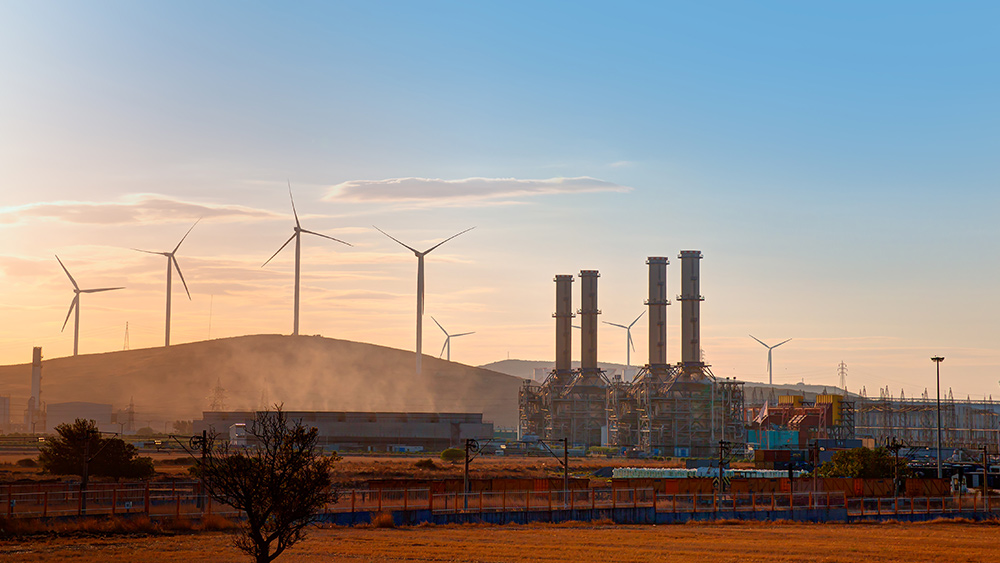Electrification without the infrastructure
07/26/2024 / By News Editors

As state and federal policies mandate the electrification of virtually all end uses to reduce carbon emissions from fossil fuels. For example, 18 states have adopted California’s Advanced Clear Car II rules requiring increasing percentages of new vehicle sales to be EVs, reaching 100% for the 2035 model year. In 2019, New York City enacted Local Law 97, which requires all residential buildings larger than 25,000 square feet to convert to electricity by 2035. Other states, such as New Jersey seek to convert all residential heating to electricity.
(Article by Jonathan Lesser republished from WattsUpWithThat.com)
Together, mandates for electric vehicles (EVs) and electrification of space and water heat will likely double electricity consumption and peak demand. Coupled with policies that mandate supplying the nation’s electricity with zero-emissions resources, notably intermittent wind and solar power, not only will electricity prices continue to increase but the ability to meet consumers’ increased demand will become more problematic.
One would assume that mandates requiring consumers to switch to electricity would recognize the need for the additional infrastructure needed to meet increased demand. One would be wrong. Not just the additional generating resources to replace the coal and natural gas plants being shuttered, but also the new transmission lines, transformers, and upgraded distribution lines that will be needed to handle the increased loads, especially when demand peaks, such as in the early evening hours.
That infrastructure will be costly. The infrastructure needed for an all-EV future alone will likely cost between$2 and $4 trillion. Additional infrastructure to handle increased demand from switching space and water heat to electric heat pumps, as policymakers have proposed, will drive costs even higher.
The OPEC oil embargoes of the 1970s clearly demonstrated the link between energy prices and economic growth. By increasing the cost to produce most goods and services, the embargoes exacerbated inflation and caused the U.S. economy to fall into recession. The same relationship holds for electricity, especially as electricity becomes the “fuel” for more end uses: higher electric prices mean reduced economic growth, leading to a lower standard of living and greater economic hardship for consumers.
Among the nation’s electric grid operators, the twin policies of forcing greater electrification and requiring it to be met primarily with intermittent wind and solar generation are creating concerns that reliability will suffer, leading to widescale blackouts. For example, the New York Independent System Operator estimates that it will need almost 30,000 MW – roughly the size of 30 nuclear plants – of “Dispatchable Emissions-free Resources” by 2030. Although NYISO states that DEFRs are “not yet available on a commercial scale,” in fact, they don’t exist. Assuming a non-existent generating technology will be invented, commercialized, and deployed on a large scale in just six years is a technological and economic fantasy.
Hence, to address the lack of needed electric infrastructure, instead policymakers plan to restrict access to the electricity they have decreed consumers must use. The idea is to “manage” electricity demand rather than build the infrastructure necessary to allow consumers access to the electricity they need when they need it.
For residential customers the mechanisms to do so include time-of-use pricing, akin to the “surge” pricing used by Uber, which raises prices when demand is greatest; and direct load control, whereby utilities control when and how much consumers can use their large electric-consuming appliances. Home EV chargers will be the largest electricity users for many households and as they proliferate, they will impose the greatest demand on local grids. Another idea is for local utilities to use EVs as resources – draining EV batteries when the utility requires additional electricity to meet demand.
For large commercial and industrial customers, it includes interruptible contracts, whereby the local utility or grid operator can shut off the customer’s electricity for a specified duration in exchange for a lower electricity price.
Electricity consumption can be “managed” or even reduced by restricting consumers’ access to it or by charging prohibitively high prices when they most want that access. But doing so has a real economic cost, which policymakers have ignored.
The result will be greater consumer inconvenience, higher costs, lower economic growth, and greater economic hardship. While some environmentalists may consider such an outcome a “feature” and not a “bug,” presumably most consumers will not.
Read more at: WattsUpWithThat.com
Submit a correction >>
Tagged Under:
big government, climate change, Collapse, current events, electric vehicles, electricity, energy supply, environment, EVs, green living, Green New Deal, green tyranny, insanity, power, power grid, rationing, scarcity, stupid, supply chain, Xpost
This article may contain statements that reflect the opinion of the author
RECENT NEWS & ARTICLES
COPYRIGHT © 2017 COLLAPSE.NEWS
All content posted on this site is protected under Free Speech. Collapse.news is not responsible for content written by contributing authors. The information on this site is provided for educational and entertainment purposes only. It is not intended as a substitute for professional advice of any kind. Collapse.news assumes no responsibility for the use or misuse of this material. All trademarks, registered trademarks and service marks mentioned on this site are the property of their respective owners.




















